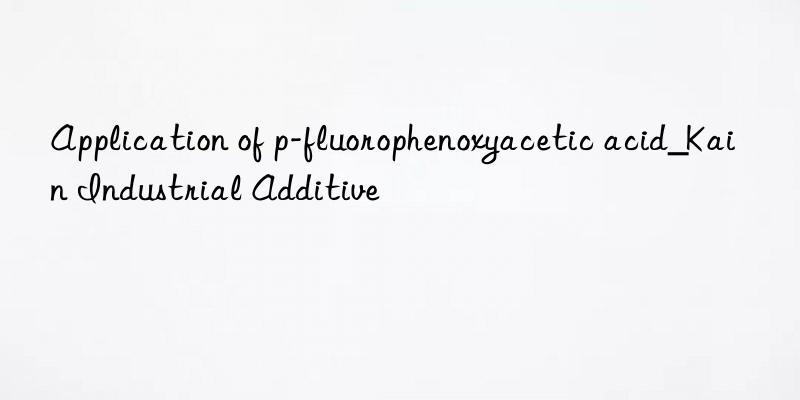
Background and overview[1]
P-Fluorophenoxyacetic acid is an important phenoxy plant growth regulator and can also be used as a pharmaceutical and chemical synthesis intermediate. If parafluorophenoxyacetic acid is inhaled, please move the patient to fresh air; if the skin comes into contact, take off contaminated clothing, rinse the skin thoroughly with soap and water, and seek medical treatment if you feel uncomfortable; if the eye contact occurs, seek medical attention. Separate eyelids, rinse with running water or saline, and seek medical attention immediately; if ingested, rinse mouth immediately, do not induce vomiting, and seek medical attention immediately.
Apply[1-2]
Fluorophenoxyacetic acid is an important phenoxy plant growth regulator. It can be effectively absorbed by the roots, stems, leaves, flowers and fruits of plants. It can prevent flower and fruit drop, promote fruit setting, and also It can inhibit the overdevelopment of legume root systems, and can induce seedless fruits and accelerate ripening and increase yields. It is one of the more common organic pollutants in agricultural production. Studies have shown that p-fluorophenoxyacetic acid can activate the insect resistance of rice to rice planthoppers, and can reduce the survival rate of rice planthopper nymphs to less than 10%, which has high economic benefits. According to the occurrence of pests in different ecological zones, it can be used as an induced pest-resistant agent in plants to make plants resistant to pests, thereby achieving the purpose of safe and effective pest control.
Content determination[1-2]
Using nano-Pt/TiO2 as a photocatalyst, photocatalytically degraded a small amount of p-fluorophenoxyacetic acid in water, and used the open circuit potential-time curve method to measure the fluoride ion content produced during the reaction for 2 hours. It was found that the initial concentration of p-fluorophenoxyacetic acid was consistent with The concentration of fluoride ions generated by photocatalysis has a good linear relationship, thus establishing a new photocatalytic degradation-electrochemical combined method to determine the content of a small amount of p-fluorophenoxyacetic acid in water. The linear range of the method is 1.0×10-4~1.0× 10-6 mol·L-1(R2=0.9999). This method is suitable for the analysis of small amounts of p-fluorophenoxyacetic acid in aqueous solutions.
Main reference materials
[1] Determination of p-fluorophenoxyacetic acid content by photocatalysis-electrochemistry
[2] CN201510613527.6 A method of stimulating induced insect resistance in rice

 微信扫一扫打赏
微信扫一扫打赏

